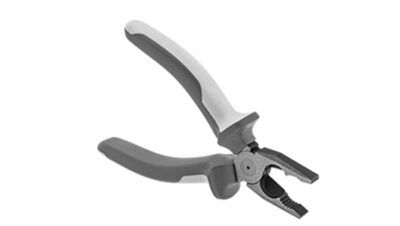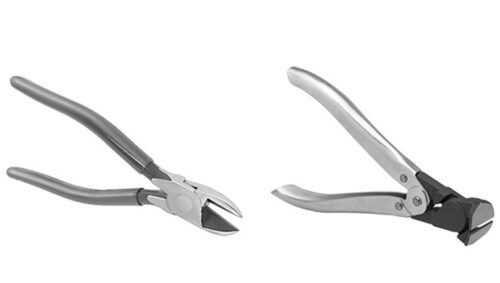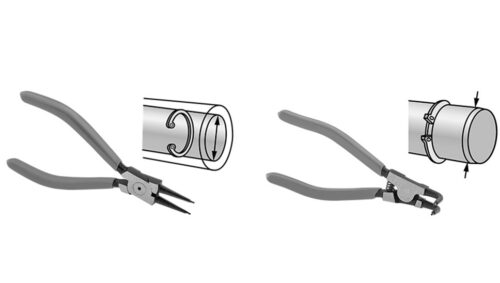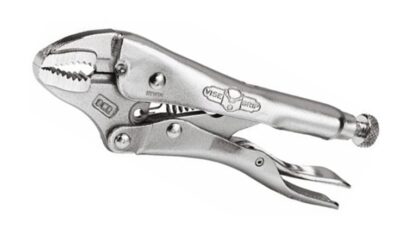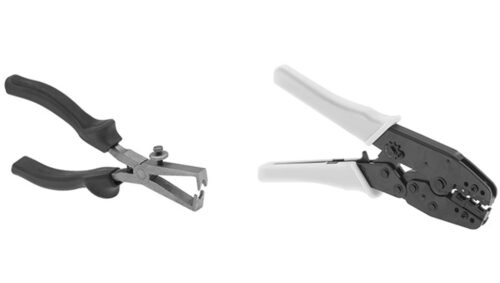Pliers
Pliers are a type of hand tool designed to hold, cut, bend and clamp. They consist of a pair of metal levers connected at one point. There are handles on the longer end of the lever, and the jaw on the shorter side. Various forms of jaws define the purpose of the pliers. There are combination pliers, cutting pliers, locking pliers, crimping, and many other types of pliers for special purposes.
Choose the right type and size of work pliers. When working with pliers, make sure that your hands are not greasy because they can slip. If the pliers slip, you can injure yourself, and damage the pliers and what you are working on. Pliers are much harder to use when the jaws are worn out and damaged. Always check the condition of the tools regularly.
As with most tools, if you have to invest almost all your strength to achieve something, then use either the wrong tool or the wrong technique.
Combination pliers
Combination pliers are most often used in car workshops because they have multiple purposes. The jaw of the pliers contains a flat and serrated holding hole and a wire-cutting blade. The flat part keeps the objects flat, and the jagged ones hold the rounded objects. Cutters are used to cut wires of softer materials and thinner steel wires. utters should be used for softer materials that will not damage the blades.
Combination pliers
Needle-nose pliers
Needle nose pliers have long, tapered jaws. They are great for holding small parts or for reaching into tight spots. These pliers have a flat (square) end, unlike the combined ones where it is rounded. The flat end of the jaw allows precise bending of wire or thin steel sheet along the straight edge. There are several forms of needle nose pliers – straight, round and curved.
Arc joint pliers
Most pliers are limited by the size of the grip, and the maximum opening of the jaw. For larger objects, it is necessary to have pliers with a larger jaw opening. For such purposes, arc joint pliers are used, which have the possibility of separating the handles, which adjusts the desired jaw grip.
Arc joint pliers
Diagonal cutting pliers
Diagonal cutting pliers have a jaw in the shape of diagonal cutters. Used for cutting wires or wedges. They should not be used for cutting hard materials as they will damage the plier’s blades.
There are cutting pliers with cutters at right angles. They are used for cutting soft materials that protrude about a surface.
Diagonal cutting pliers
Snap ring pliers
Snap ring pliers have metal pins that fit into the holes. There are internal and external fuses. For internal fuses, some pliers press the lever to squeeze the fuse, and for external ones, they open the fuse. Since fuses can easily fall off the pliers and fly away at high speed, it is necessary to wear goggles to protect your eyes from injuries.
Hose clamp pliers
Spring steel (Corbin) style hose clamps are commonly used to secure rubber hoses. Gripping and removing these is difficult with standard pliers. Hose clamp pliers have jaws that are specifically designed to grip these hose clamps making them easier to remove. The built-in ratcheting feature allows the plier to maintain tension on the clamp so hands can be taken off the tool.
Hose clamp pliers
Locking pliers
Fixing pliers are pliers for fixing one or more objects. They are useful because they squeeze the object and hold it in place while the hands are free during work. These pliers have an adjustable jaw deflection via screws. To fix an object, place the object between the jaws, turn the screw until the jaws are almost closed, and then squeeze them to close them. You can adjust the clamping force via the screws. To release, squeeze the release lever and the jaws will release the fixed object.
Locking pliers
Wire stripping pliers
Wire strippers are designed to remove the protective coating found on electrical wires without damaging the core wire. Although numerous different wire strippers are available, the process for using wire strippers is generally the same, or at least very similar.


